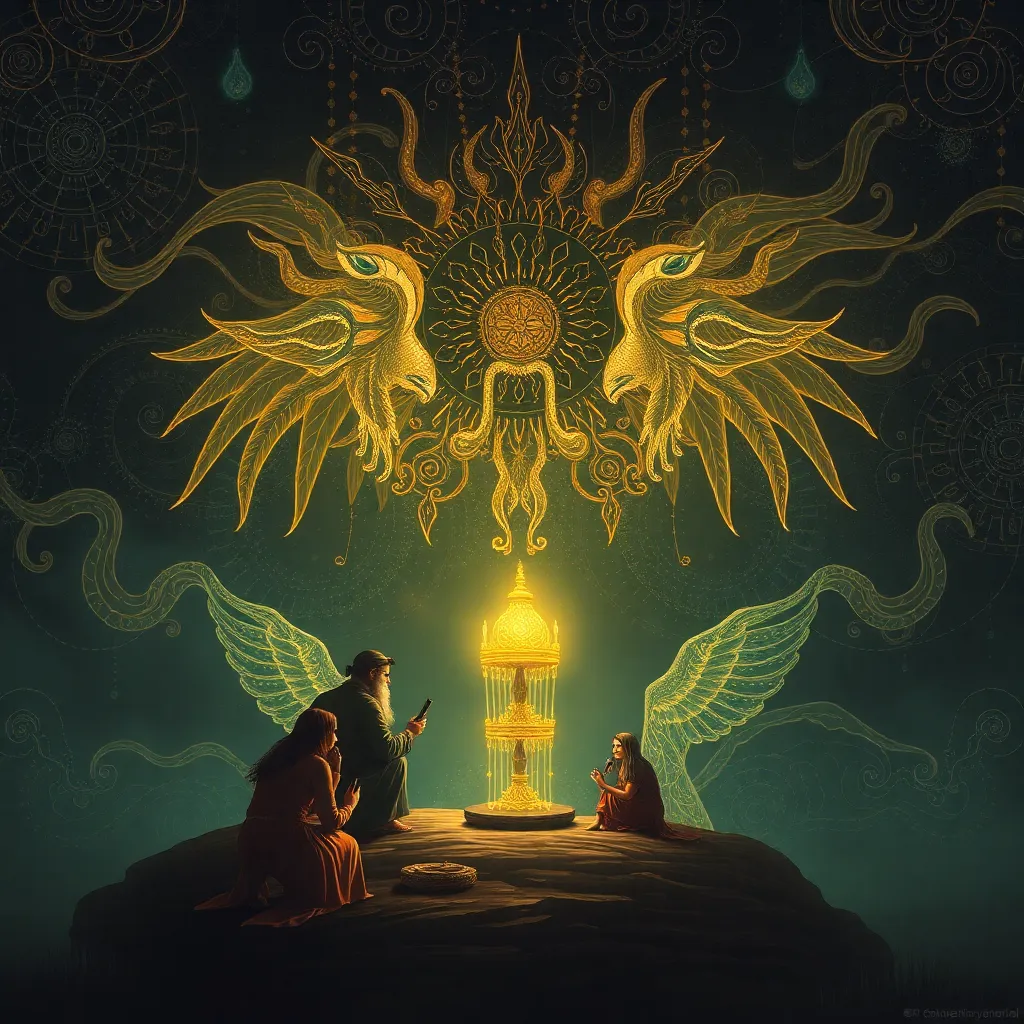The Baku and the Art of Storytelling: Examining the Myth’s Role in Oral Traditions
I. Introduction
The Baku, often depicted as a dream-eating creature, holds a special place in the folklore of various cultures, particularly in Japan and parts of Chinese tradition. This mythical being is not just an enigmatic figure; it represents the deep-seated human need to understand and articulate the mysteries of our existence. In the realm of oral traditions, storytelling has been a fundamental way for communities to transmit knowledge, values, and cultural heritage through generations.
This article aims to explore the intersection of the Baku myth and oral storytelling, examining how this creature serves as a narrative vehicle that encapsulates moral lessons, cultural values, and the human experience.
II. The Baku: An Overview of the Myth
A. Origins and cultural significance of the Baku in various traditions
The Baku myth is believed to have originated in ancient China, where it was thought to be a creature that could devour nightmares. Over time, this myth spread to Japan, where the Baku became a protector of dreams and a symbol of good fortune. In each culture, the Baku embodies unique characteristics that reflect societal beliefs and values.
B. Description of the Baku’s characteristics and symbolism
The Baku is typically described as a hybrid creature, often featuring the trunk of an elephant, the body of a bear, and the paws of a tiger. This peculiar combination of features symbolizes the blending of different strengths and abilities, representing protection and wisdom. The Baku’s primary role as a dream eater signifies its connection to the subconscious and the human psyche.
C. Variations of the Baku myth across different cultures
- Chinese Tradition: In Chinese folklore, the Baku is also associated with the concept of auspiciousness and is believed to bring good fortune.
- Japanese Tradition: The Japanese Baku is often invoked in prayers for protection against nightmares and misfortune.
- Modern Interpretations: In contemporary storytelling, the Baku is sometimes portrayed as a whimsical character, appealing to both children and adults.
III. The Role of Myths in Oral Traditions
A. Understanding oral traditions and their importance in cultural transmission
Oral traditions encompass the practices of storytelling, song, and dance that have been passed down through generations. These traditions are essential for preserving cultural heritage, as they provide a means of sharing history, values, and identity within communities.
B. The function of myths in conveying moral lessons and cultural values
Myths serve as vehicles for imparting moral lessons, allowing individuals to reflect on their behaviors and societal norms. The Baku myth, for instance, can be interpreted as a reminder to confront one’s fears and anxieties, highlighting the importance of mental well-being.
C. The Baku as a vehicle for storytelling in oral traditions
The Baku myth enriches oral storytelling by providing a relatable character that embodies both the fears and aspirations of people. As storytellers weave tales involving the Baku, they engage their audiences with themes of courage, protection, and the power of dreams.
IV. Storytelling Techniques and Methods
A. Common storytelling techniques used in oral traditions
- Call and Response: Engaging the audience through interactive elements.
- Repetition: Reinforcing key themes and enhancing memorability.
- Imagery: Utilizing vivid descriptions to create mental pictures.
B. The role of performance and audience engagement in storytelling
Storytelling is often a performative act, where the storyteller’s delivery, tone, and body language play a crucial role in engaging the audience. The Baku myth, when told, invites listeners to visualize the creature and its adventures, fostering a shared experience that transcends time and space.
C. How the Baku myth is utilized in storytelling practices
Storytellers may use the Baku as a central figure in their narratives to explore themes such as overcoming fears, the importance of dreams, and the quest for emotional balance. Through these stories, audiences are encouraged to reflect on their own experiences and emotions.
V. The Baku in Contemporary Storytelling
A. Adaptations of the Baku myth in modern literature and media
In recent years, the Baku has found its way into modern literature, animations, and films. Authors and creators reinterpret the myth, often highlighting its relevance in today’s society. For instance, children’s books featuring the Baku emphasize themes of courage and resilience.
B. The impact of technology on the preservation and evolution of oral traditions
Digital platforms have revolutionized storytelling, allowing oral traditions to reach wider audiences. Podcasts, social media, and online videos provide new avenues for sharing the Baku myth, ensuring its survival in a rapidly changing world.
C. Case studies of contemporary artists and storytellers using the Baku myth
- Author A: An acclaimed children’s book writer who integrates the Baku into tales of adventure.
- Artist B: A visual artist who explores the Baku’s symbolism through paintings and installations.
VI. The Psychological and Emotional Impact of Myths
A. The therapeutic role of storytelling in mental health and community bonding
Storytelling is not merely an art form; it serves as a therapeutic tool that fosters emotional healing and community cohesion. Myths like the Baku offer audiences a framework to process their fears and experiences.
B. How the Baku myth resonates with audiences on a personal level
The Baku myth resonates deeply with individuals who struggle with anxiety and nightmares. By personifying these fears, the Baku offers a relatable and comforting presence, allowing people to confront their challenges.
C. The role of storytelling in fostering cultural identity and continuity
Through the retelling of myths such as the Baku, communities reinforce their cultural identities, ensuring that traditions endure. This continuity is vital for maintaining societal bonds and shared values.
VII. Challenges in Preserving Oral Traditions
A. The impact of globalization and modernization on oral storytelling
Globalization poses significant challenges to the preservation of oral traditions. As cultures intermingle, traditional storytelling practices risk being overshadowed by dominant narratives.
B. Threats to the transmission of myths like the Baku
Modern distractions, such as technology and fast-paced lifestyles, can diminish the appreciation for oral storytelling. The Baku myth, like many others, faces the threat of being forgotten if not actively preserved.
C. Efforts and initiatives to preserve oral traditions and myths
- Community Workshops: Programs that teach storytelling techniques to younger generations.
- Digital Archives: Initiatives to record and share oral traditions online.
VIII. Conclusion
The Baku myth is a powerful example of the role that storytelling plays in oral traditions. It serves not only as a captivating narrative but also as a means of conveying cultural values and moral lessons. In our contemporary society, where the relevance of myths can sometimes seem diminished, it is essential to recognize and celebrate their enduring significance.
As we navigate the complexities of modern life, let us appreciate and preserve the art of storytelling, ensuring that myths like the Baku continue to inspire and resonate with future generations.



